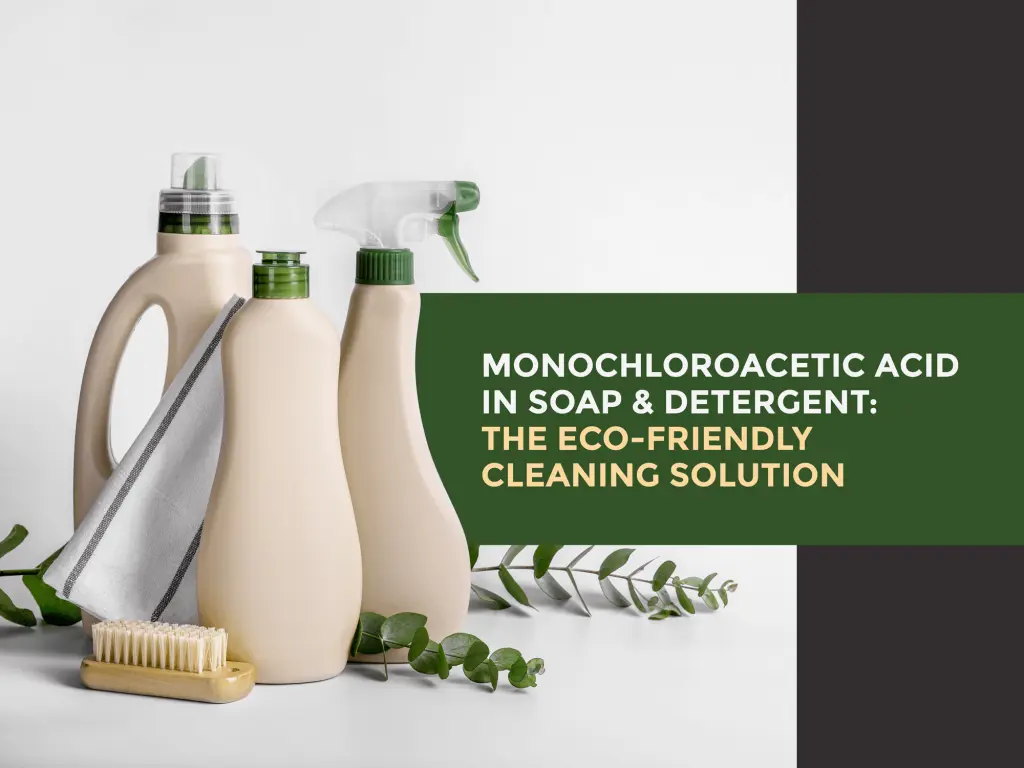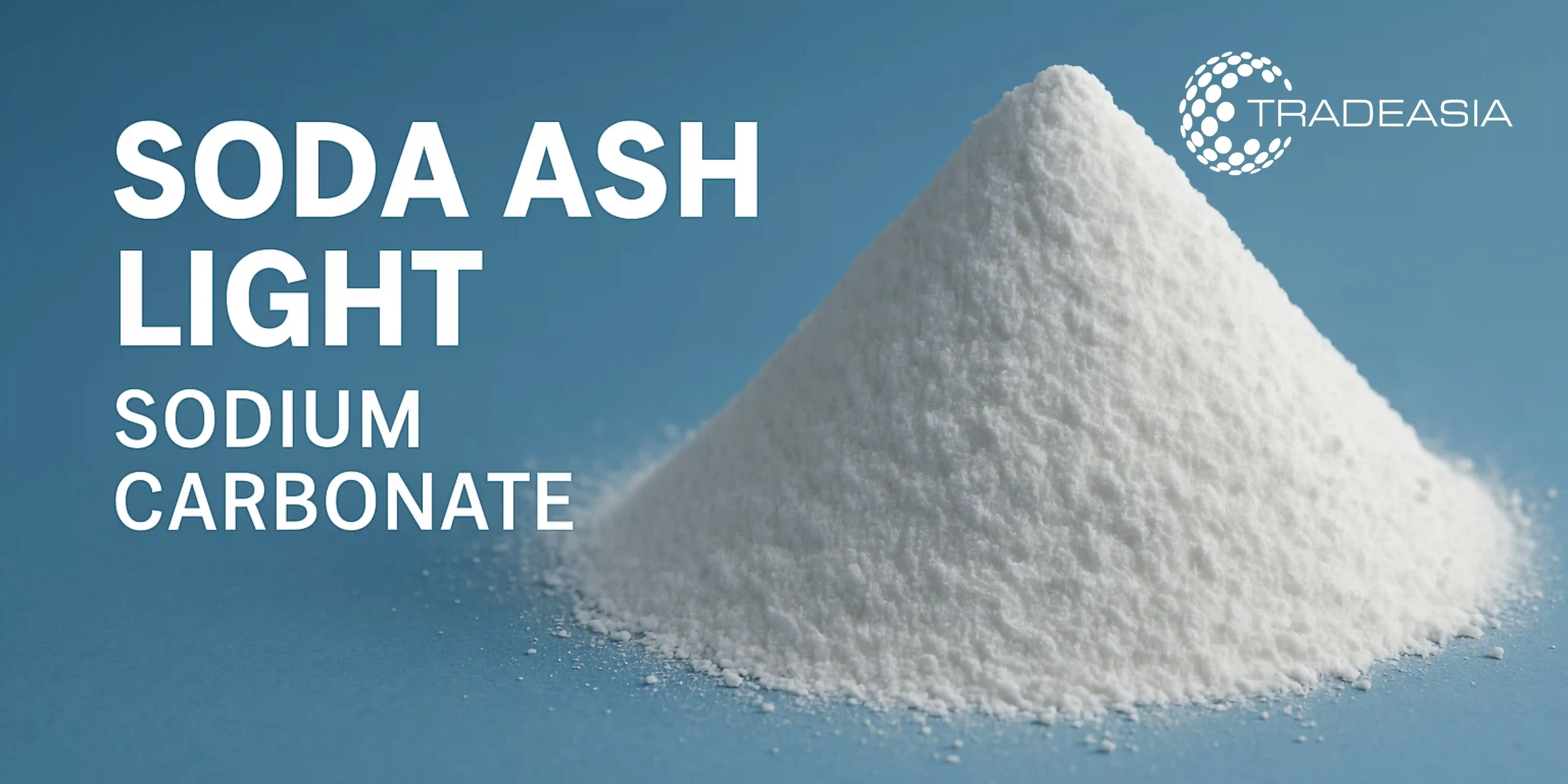Sodium Monochloroacetate (SMCA) plays a critical role in today’s fast-evolving detergent manufacturing industry. Known for its utility as an intermediate in producing amphoteric surfactants and viscosity modifiers, SMCA is widely used in both consumer and industrial cleaning products. With a unique structure that facilitates chemical modifications, it helps improve formulation performance, texture, and environmental compliance.
This compound is particularly valued in Southeast Asia, including Singapore, for supporting versatile detergent formulations that align with local environmental and product safety standards. As brands shift toward “green” and biodegradable product lines, SMCA has become indispensable for manufacturers seeking high-performance yet sustainable chemical ingredients. In this article, we explore the key roles, benefits, and safety of SMCA in modern detergent production. Below is a detailed analysis of SMCA’s applications and industry impact, with each section expanded for clarity and depth.
Overview and Chemical Identity
Sodium monochloroacetate (SMCA) is the sodium salt of monochloroacetic acid, with the chemical formula CH₂ClCOONa. It presents as a white crystalline powder, readily soluble in water, and serves as a reactive building block for a wide range of surfactants and detergent ingredients. Its core reactivity comes from the chlorine-substituted acetyl group, enabling precise synthetic control over final products like amphoteric surfactants and thickening agents.
The production process typically involves chlorination of acetic acid followed by neutralization using sodium hydroxide or sodium carbonate. After synthesis, it is isolated as a solid through drying techniques like spray drying, producing a free-flowing, accurate-to-dose intermediate for industrial-scale applications. Its form allows better control in dosing reactors and blending systems across detergent production lines.
In detergent chemistry, SMCA is a prized compound for its flexibility. It can be transformed into numerous end products such as betaines, glycinates, and thickeners like carboxymethyl cellulose (CMC). These derivatives serve critical functional roles such as foam modulation, viscosity enhancement, and pH buffering. SMCA’s importance in surfactant and additive development cannot be overstated for modern detergent formulations.
SMCA as Wetting and Foaming Agent Precursor
SMCA is an essential intermediate in the production of mild amphoteric surfactants like cocamidopropyl betaine and sodium N-lauroyl glycinate. These ingredients are widely used in laundry detergents, body washes, and baby cleaning products due to their reduced skin irritation potential and excellent foaming capabilities. By reacting with long-chain fatty acids or amino acids, SMCA enables the formation of versatile surfactants with balanced hydrophilic-lipophilic properties.
These amphoteric surfactants are valuable for boosting product appeal especially in premium and eco-friendly detergent lines. They enhance the cleansing power without stripping the skin or fabrics of moisture, a property that has become increasingly important in modern formulations. Moreover, SMCA-derived surfactants exhibit strong compatibility with hard water and a broad pH range, further expanding their use across detergent applications.
Foam quality, wetting power, and solubilizing capacity are often improved by SMCA-based compounds. These features make SMCA a go-to intermediate for developers looking to achieve a balance between performance and gentleness. For Singaporean consumers and regulators who prioritize product safety, SMCA derivatives meet high-quality standards.
Role in Thickening and Viscosity Control
Thickening agents are crucial in ensuring detergent products achieve the desired texture and appearance. SMCA plays a central role in the synthesis of carboxymethyl cellulose (CMC), a water-soluble polymer used as a thickener and stabilizer in detergents, shampoos, and cleaning gels. The reaction of SMCA with cellulose introduces carboxymethyl groups, increasing solubility and viscosity.
Using CMC in detergents enhances visual appeal and improves the user experience by delivering a smooth, uniform consistency. It also contributes to the functional stability of the formulation by preventing ingredient separation and aiding suspension of active agents. Without these properties, many detergents would lack the professional, easy-to-use feel demanded by consumers.
In addition to improving viscosity, CMC offers benefits like better fabric conditioning and soil re-deposition control. These characteristics ensure cleaner wash results and better maintenance of fabric texture. The use of SMCA in this application highlights its multifunctional role in supporting quality detergent production across consumer and industrial segments.
Contribution to Surfactant Fining and Stabilization
SMCA is used in producing stabilizers like sodium N-hydroxyethyl glycinate, which help maintain the integrity of complex detergent systems. These compounds work as chelators, ensuring enzymes and other sensitive components perform effectively even in hard water conditions. This makes them especially important in liquid detergents and enzyme-based formulations.
Such stabilizers also aid in UV-light protection, color retention, and resistance to microbial degradation, extending the product shelf life. For tropical markets like Singapore, where heat and humidity pose stability challenges, SMCA-based auxiliaries are instrumental in ensuring performance consistency. Their role goes beyond initial production they actively safeguard detergent quality throughout distribution and use.
These SMCA derivatives also serve as co-surfactants, supporting compatibility and synergy among ingredients like linear alkylbenzene sulfonate (LAS) and sodium lauryl ether sulfate (SLES). The resulting blends show enhanced foaming, better spreadability, and reduced residue, reflecting the growing demand for more sophisticated detergent experiences.
Industrial Intermediates and Co-Products
Outside the detergent field, SMCA serves as a vital chemical precursor in several industries. It is used to synthesize herbicides like 2,4-D, pharmaceutical intermediates, and chelating agents such as EDTA. This versatility underlines the strong industrial infrastructure supporting SMCA production, enabling economies of scale for detergent applications.
The overlap between SMCA's use in agriculture, pharma, and surfactants creates opportunities for detergent manufacturers to leverage shared logistics and supply chains. Facilities equipped for SMCA production can thus support both domestic detergent needs and broader chemical markets, improving resilience and flexibility.
In Singapore, this cross-industry synergy aligns with the government’s emphasis on chemical industry clustering and integrated value chains. For detergent producers, this means better availability, price stability, and sourcing confidence for high-purity SMCA.
Handling, Safety, and Purity Considerations
Despite its usefulness, SMCA requires careful handling due to its high reactivity and potential toxicity. The compound is corrosive and should not be inhaled or ingested. Industrial users are advised to employ personal protective equipment (PPE), including gloves, goggles, and dust masks, in well-ventilated environments. Safety data sheets (SDS) and training protocols are essential in preventing workplace incidents.
Storage and transportation also demand attention. SMCA is hygroscopic, meaning it can absorb moisture from the air. Proper packaging and climate control are necessary to maintain product quality. Excess moisture can impact reactivity, interfere with downstream reactions, and degrade storage life.
Purity is another critical parameter. High-purity SMCA ensures efficient surfactant synthesis, minimal by-products, and consistent end-product performance. Manufacturers often specify maximum allowable impurity levels and adhere to internationally recognized chemical quality standards.
Sustainability and Market Trends in Singapore
Environmental sustainability is becoming a focal point in the global detergent industry, and SMCA is not exempt. Certified manufacturers now offer ISCC PLUS-compliant SMCA derived from renewable feedstocks. These green variants reduce lifecycle emissions and contribute to more sustainable detergent brands.
In Singapore, where regulations encourage eco-friendly formulations, SMCA plays a role in supporting biodegradable, phosphate-free detergents. It fits well into clean-label and "safe for environment" campaigns. Consumers and regulators alike expect ingredient traceability and sustainability, which SMCA suppliers are increasingly providing.
With growing demand for mild, efficient, and eco-certified products, SMCA enables local manufacturers to innovate while maintaining compliance. Its adaptability ensures that SMCA will remain an essential ingredient in Singapore’s evolving detergent sector.
Conclusion
Sodium Monochloroacetate (SMCA) is a powerful enabler in modern detergent chemistry, unlocking performance, safety, and sustainability. From thickener synthesis to surfactant stabilization and wetting agent formation, SMCA ensures that detergent products meet both consumer expectations and industrial demands.
For detergent manufacturers in Singapore and globally, SMCA offers a pathway to improved formulations, stable supply chains, and eco-compliant product development. Its multi-functionality and compatibility with green chemistry make it a smart investment in a competitive and rapidly evolving market. To learn more about sourcing high-purity SMCA or developing sustainable detergent formulations tailored to Singapore’s market, please contact our team here.
Referensi


Leave a Comment